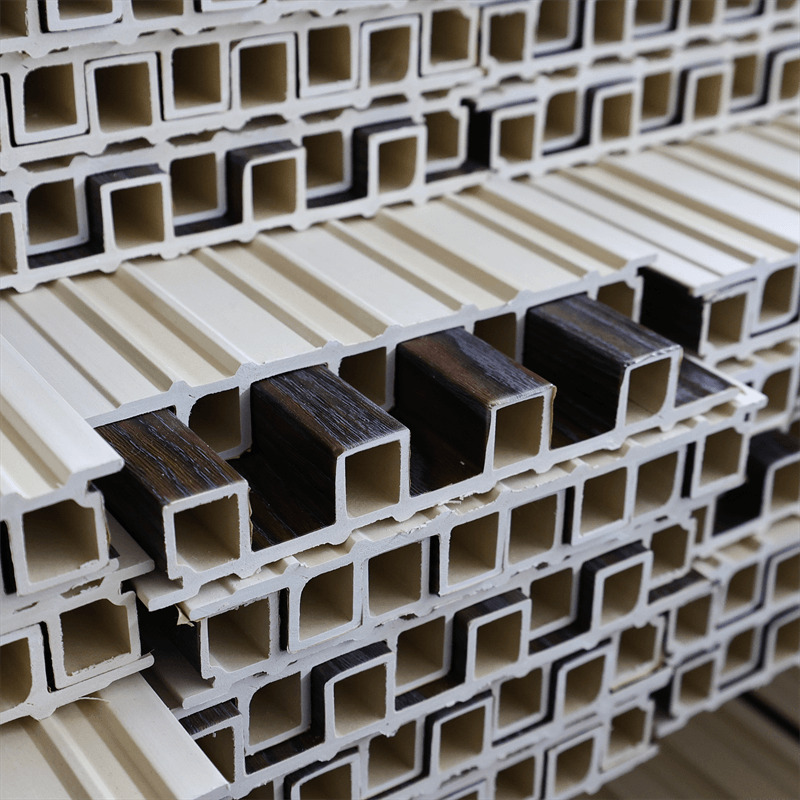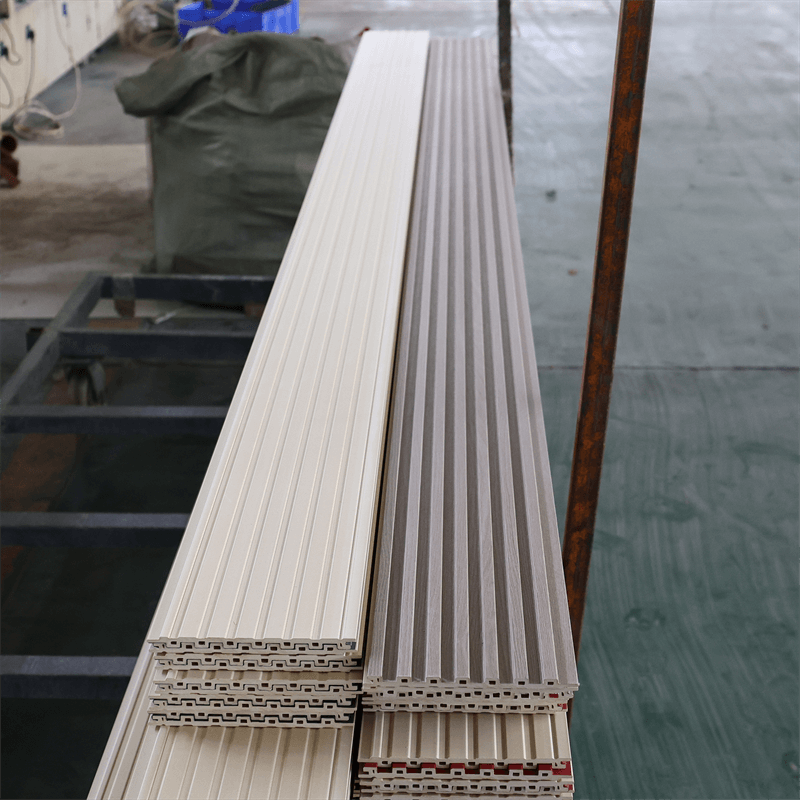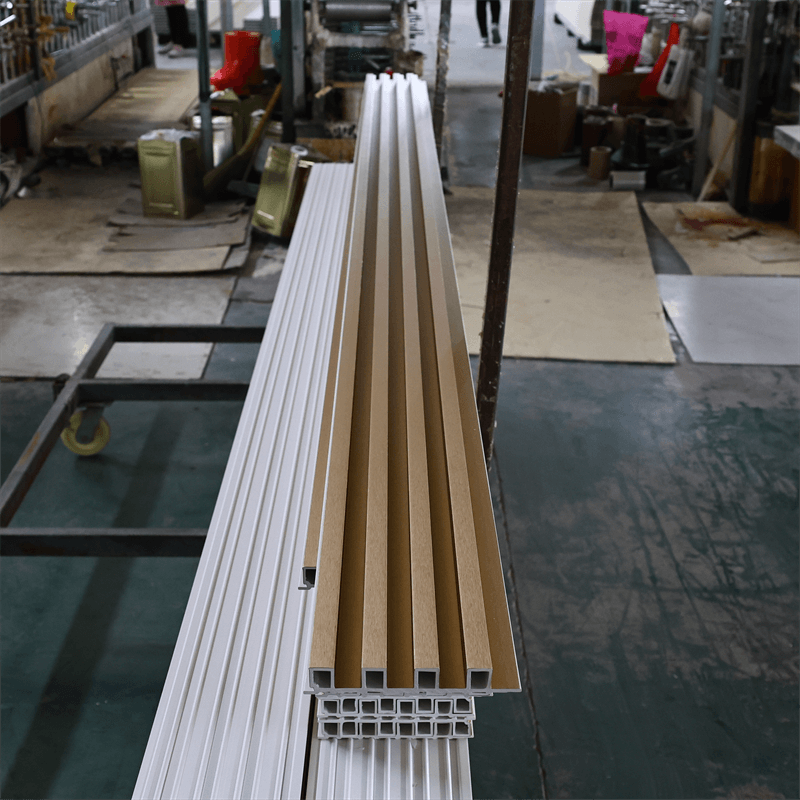Green buildings are at the forefront of sustainable design, aiming to minimize environmental impact while creating healthy and efficient spaces.
As the demand for sustainable building materials grows, WPC (Wood-Plastic Composite) wall panels have emerged as a popular choice for integrating style and sustainability in building projects.
In this essay, we will explore how WPC wall panels contribute to the principles of green buildings, emphasizing their characteristics, environmental benefits, and applications.
The essay will be divided into four sections to delve into different aspects of WPC wall panels’ role in combining style and sustainability in green buildings.

I. Eco-Friendly Composition:
WPC wall panels are made from a combination of recycled wood fibers and thermoplastic polymers, making them an environmentally friendly alternative to traditional materials.
The use of recycled wood reduces the demand for new timber, helping to conserve forests and prevent deforestation.
Additionally, the incorporation of thermoplastic polymers extends the lifespan of the panels, reducing the need for frequent replacements and minimizing waste.
The eco-friendly composition of WPC wall panels aligns with the principles of green buildings by promoting the efficient use of resources and reducing environmental impact.
By opting for WPC wall panels, architects and designers contribute to sustainable construction practices and support the preservation of natural resources.
II. Energy Efficiency:
Green buildings prioritize energy efficiency to minimize energy consumption and reduce greenhouse gas emissions.
WPC wall panels can contribute to the energy efficiency of a building in several ways.
Firstly, their insulation properties help to regulate temperature and reduce the need for excessive heating or cooling, resulting in lower energy consumption.
Additionally, WPC wall panels can be designed with integrated insulation materials, further enhancing their energy-saving capabilities.
The insulation properties of WPC wall panels contribute to maintaining comfortable indoor temperatures, reducing reliance on mechanical heating and cooling systems and promoting energy conservation.
III. Durability and Longevity:
The durability and longevity of WPC wall panels are key factors in their sustainability profile.
These panels are designed to withstand the test of time, resisting wear and tear, fading, and degradation.
Their ability to maintain their structural integrity over an extended period reduces the need for frequent replacements, which would result in additional resource consumption and waste generation.
The longevity of WPC wall panels aligns with the principles of green buildings by promoting the concept of “reduce, reuse, and recycle.”
By selecting durable materials like WPC wall panels, architects and designers contribute to the overall sustainability of the building by minimizing waste and the environmental impact associated with replacement and disposal.
IV. Recyclability:
Another notable aspect of WPC wall panels is their recyclability.
At the end of their lifespan, WPC wall panels can be recycled and used to create new materials, reducing the reliance on virgin resources and diverting waste from landfills.
This closed-loop recycling approach aligns with the circular economy principles and contributes to the sustainability goals of green buildings.
The recyclability of WPC wall panels highlights their commitment to reducing the environmental impact associated with construction and demolition waste.
By choosing recyclable materials, architects and designers actively participate in the transition towards a more sustainable and resource-efficient building industry.
WPC wall panels offer an attractive combination of style and sustainability, making them a fitting choice for green buildings.
Their eco-friendly composition, energy efficiency, durability, and recyclability contribute to the principles of sustainable construction and design.
By incorporating WPC wall panels, architects and designers can create stylish and environmentally responsible spaces that prioritize resource conservation, energy efficiency, and waste reduction.

The use of WPC wall panels in green buildings represents a shift towards a more sustainable and responsible approach to construction.
By selecting materials that combine style and sustainability, architects and designers play a crucial role in shaping a more sustainable future for the built environment.
As the demand for green buildings continues to rise, WPC wall panels are likely to become an even more prevalent choice, ensuring that style and sustainability can coexist harmoniously in the construction industry.
In conclusion, WPC wall panels offer a compelling solution for combining style and sustainability in green buildings.
Their eco-friendly composition, energy efficiency, durability, and recyclability make them an ideal choice for architects and designers seeking to create environmentally responsible spaces.
By incorporating WPC wall panels, green buildings can not only achieve their sustainability goals but also enhance their aesthetic appeal.
The use of WPC wall panels in green buildings represents a shift towards a more conscious and holistic approach to construction.
These panels contribute to the efficient use of resources, reduce environmental impact, and promote energy efficiency.
Additionally, their durability and recyclability ensure that they can be part of a circular economy, minimizing waste generation and maximizing resource utilization.
As the construction industry continues to prioritize sustainable practices, the adoption of WPC wall panels is expected to increase.
Architects and designers play a pivotal role in driving this transition by selecting materials that combine style and sustainability.
By incorporating WPC wall panels, they can create visually stunning and environmentally responsible spaces that contribute to a greener future.
In summary, WPC wall panels offer an excellent opportunity to combine style and sustainability in green buildings.
Their eco-friendly composition, energy efficiency, durability, and recyclability make them a versatile and eco-conscious choice for architects and designers.
By embracing WPC wall panels, the construction industry can move closer to achieving its sustainability goals while creating aesthetically pleasing and environmentally responsible spaces.

